Flavor difference between coffee beans in Guji and Arsi in Ethiopia and Sidamo
Professional coffee knowledge exchange more coffee bean information please follow the coffee workshop (Wechat official account cafe_style)
The previous article on Qianjie mentioned that the Yega Chuefei coffee producing area is attached to the Sidamo producing area, and it is independent because of its outstanding flavor. The front street of this article continues to explore the coffee producing area of Ethiopia-Sidamo. When recommending Ethiopian coffee beans, Qianjie asks guests, "would you like a brighter, sour Esser or a juicy one?" When everyone is often obsessed with drinking Essex beans, the baristas in front street will choose the flavor they want as quickly as possible through the citrus-like bright and sour flavor of Yegashifi and the fruity and juicy flavor of Sidamo.
Sidamo
Sidamo
The Sidamo region is located in the south of Ethiopia, extending to the districts of Arsi and Bale in the east and Gamogofa in the west. Sidamo coffee is cultivated at the altitude of 1400m-2000m. The industry here is dominated by agriculture, and the main growing area of coffee is around the Great Rift Valley (Great Rift Valley) of East Africa. Sidamo has developed rapidly in recent years and is an important distribution center for coffee export. The coffee flavor of Sidamo is very diverse, and the different soil types, microclimate and countless native coffee species make the coffee produced in each town have obvious differences and characteristics.
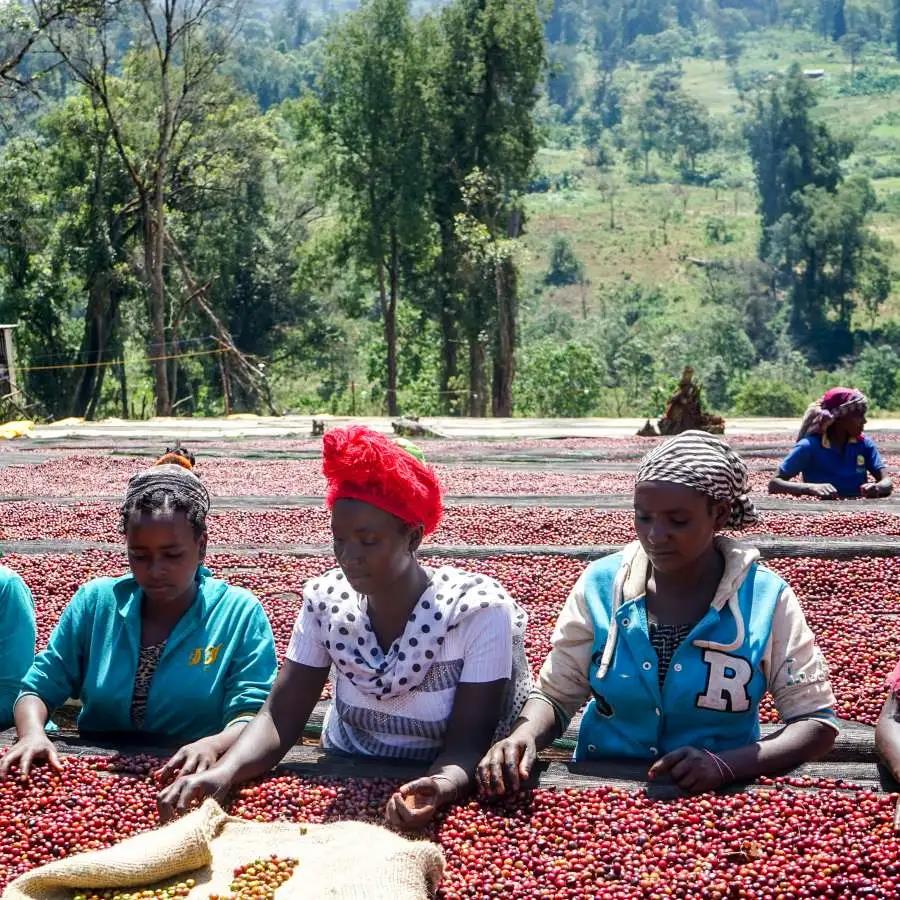
Among them, the most famous coffee growing areas in Sidamo are GUji and West Arsi. Most of the coffee beans in the Sidamo area are treated by the sun treatment. Qianjie believes that the sun treatment makes the coffee beans in the Sidamo area have a strong fruity aroma and smooth taste.
Guji
Guji
The Guji producing area, which once belonged to the Sidamo producing area, has been independent into a new producing area by the Ethiopian Commodity Exchange (ECX) in 2010. The Guji producing area, located in the southeast of Yejasuffi, is an area with complex topographical changes such as towering mountains, valleys and plains. The geology of this area belongs to the nutrient-rich black soil (Vertisol), the depth of the soil is nearly two meters, and the average elevation is more than 1800 meters. The significant temperature difference between day and night created by geographical characteristics makes the local area have various local conditions for producing high-quality coffee. What makes Guji famous, Qianjie has to mention Huakui beans.
Sakuran beans are from Hambella, located in Guji, Ethiopia's largest coffee producing region, and are administered by the state of Oromia. The west of Humbera faces the mountains of Yega Fichier. The two producing areas are separated by a highland with an elevation of 3200 meters and a width of about 30 kilometers, and are bordered by Shakiso, Uraja and Kolasha in Guji in the east and south, respectively. It is the highest coffee producing area in Ethiopia.
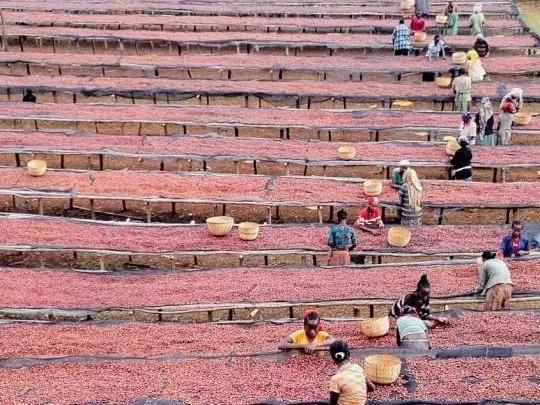
At present, there are nearly 20 processing plants of various sizes in Humbela production area. In 2017, a sun-dried bean from DW's "Buku Abel" processing plant won the Ethiopia National Taste of Harvest Competition championship, and Chinese raw bean importers named the bean Sakuran, which at that time had a strong strawberry and cream aroma. Subsequently, DW added processing plants in Dimtu, the core production area of Hambella, namely "Buku Abel", "Buku Saysay", "Haro Soresa" and "Tirtiro Goye", with an annual output of about 1100 tons of coffee. In all these estates and processing plants, strictly speaking, only the sun-dried coffee beans from the "Buku Abel" processing plant can be called "Sakuran coffee beans".
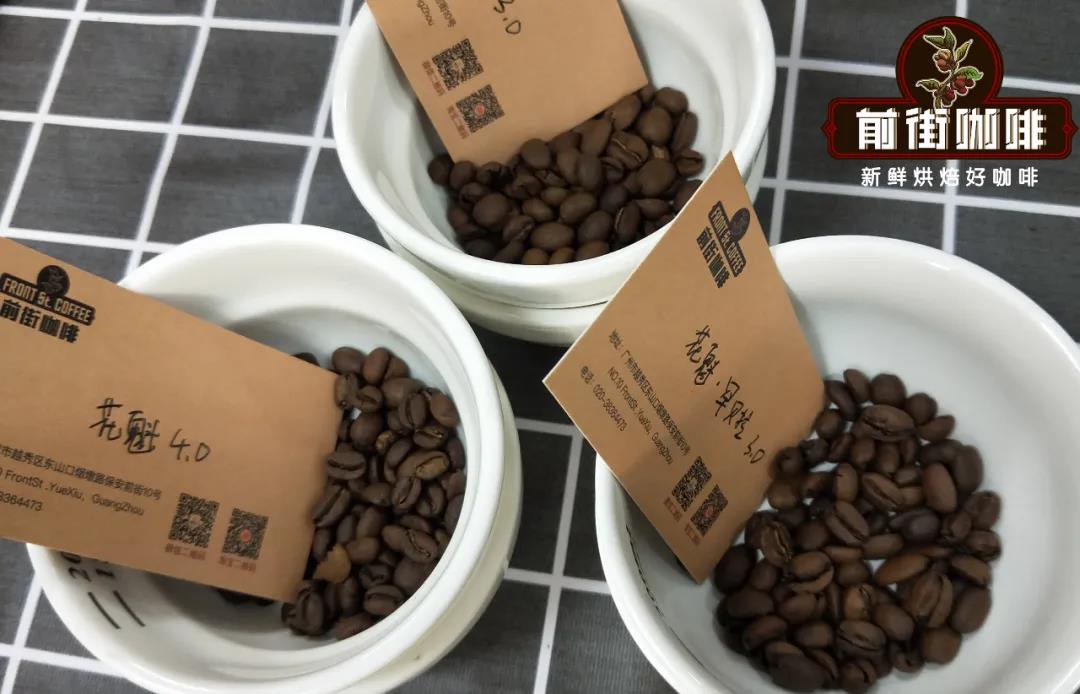
Qianjie Coffee has tested Sakui, Sakui 2.0 and Sakui 3.0 through the cup, and found that Sakui 2.0 and 3.0 are very similar to the flavor of Sakui in 2017, but the thickness and finish of Qianjie Coffee are not as good as those of the original Sakui in 2017. Qianjie can sometimes identify the same raw beans as the original Sakui from these two batches of raw beans. As for Huakui 3.1, Qianjie found that its flavor was far from that of Huakui, and even felt that its flavor was a little close to that of Rose Summer. We also confirmed this change from raw bean merchants. In 2020, as the fourth year of this coffee bean, the area of its production area has expanded several times. Coupled with more scientific planting management, Sakui 4.0 has a better flavor and has been praised by a lot of coffee players. Qianjie also started and put on the shelves of a Sakui 4.0 coffee bean.
West Alsi
West Arsi
Located between the famous Yirgacheffe coffee growing area and Haller Hararge, West Arsi is located in the western part of the Sidamo region at an altitude of 1900-2200m. The area is named after a branch of the Oromo people who have lived here for a long time.
West Alsi consists of three woredas, namely, Arsi (Arsi), Bale (Bale) and East Shewa (Ethiopia's third-tier administrative region). About 88.52% of the population of West Alsi is Oromo, which is very important in the history of coffee because they are the first tribes in human history to drink coffee, and half of the coffee produced in Ethiopia comes from the region.
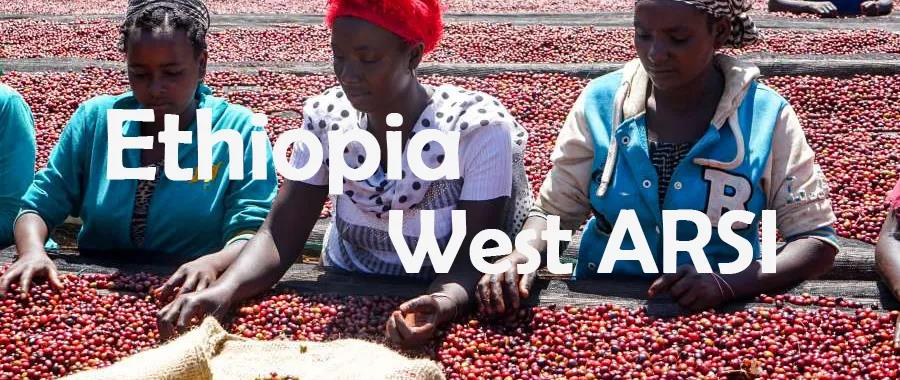
Coffee cultivation in West Alsi is based on a smallholder model, and the average smallholder farm is not large, about 2-3 hectares, but even so, they tend to be slightly larger than the usual 1.5-2 hectares in most parts of Ethiopia. Although the current coffee planting technology is still in the stage of development, compared with other producing areas, the development of coffee planting technology in West Alxi is very fast. Coffee farmers do not need to hire temporary or full-time workers, but choose coffee with the help of their families. This allows them to better control the quality of coffee, and processing stations usually pay extra for ripe red cherries, greatly increasing the enthusiasm of coffee farmers.
Sun treatment
Natural
During the coffee harvest season, farmers in the Sidamo area only pick ripe red fruits and put them in baskets one by one. The picked coffee fruit has uniform size, similar maturity and no other impurities. In the process of treatment, it is necessary to manually screen defective coffee beans and immature or overripe coffee fruits. Then lay the coffee red fruit on a high wooden frame or whole scaffolding to make the sun, so as to avoid the risk of beans smelling on the ground.
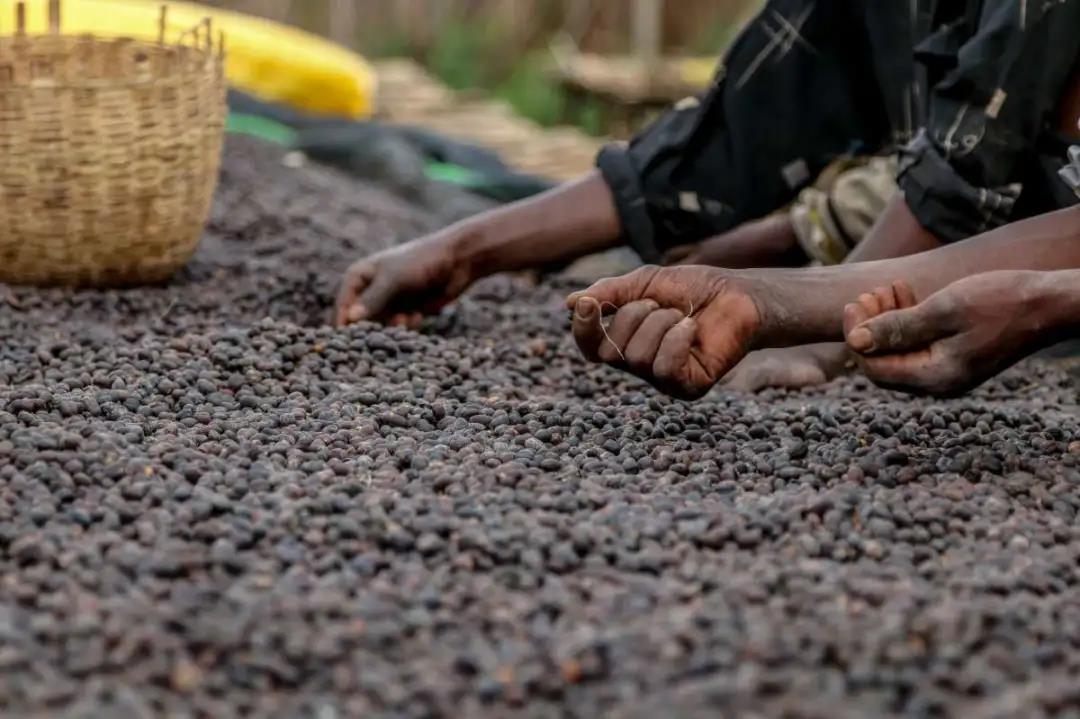
In the process of exposure, it will constantly turn to ensure that the coffee beans can be evenly exposed to water; every three to five days, farmers will manually screen out the defective and moldy beans. Wait for the peel to dry and harden, and then use a sheller to remove the hard peel. After obtaining the raw coffee beans, the farmer will do one last screening in pursuit of the perfect taste.
Next, the front street uses Sakui 4.0 from the Guji producing area and Arsi coffee beans from West Arsi for raw beans, roasting, cup testing, and brewing a series of comparisons to see how the coffee beans from the two producing areas are different.
Comparison of coffee and raw beans in Qianjie
Two kinds of coffee beans are treated in the sun, and the raw beans are green and yellow in color. Huakui 4.0 varieties will have some small particles, it looks like different sizes, Arsi's beans will be more uniform.
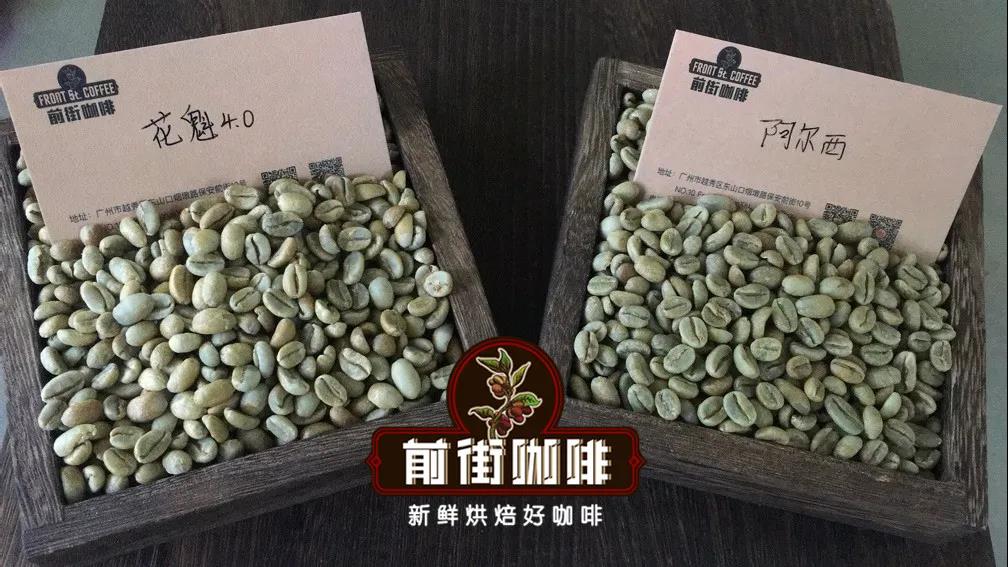
Suggestion on coffee baking in Qianjie
During the baking process of these two kinds of beans in the new season, we will prolong the dehydration time so that the bean surface and core are heated evenly. In order to show the acidity of this bean and the aroma of flowers and fruits, we use a light baking degree.
Huakui 4.0: Yang family 800N, bean dosage 480g: furnace temperature to 175 degrees Celsius into the pot, throttle open 3, firepower 120. Rise to 140 degrees, throttle open 4. Bake to 6: 00 ", the temperature is 151.7 degrees, the bean surface turns yellow, the smell of grass disappears completely, and the dehydration is completed. When the bean surface appears ugly Hu wrinkles and black markings, the smell of toast obviously changes to the smell of coffee, which can be defined as a prelude to an explosion. At this time, it is necessary to listen carefully to the sound of the explosion point, which starts to explode at 9: 50 ", the throttle is fully open, and the firepower of 188 degrees is reduced to 80." the development time of an explosion is 1: 40 ", put into the pot at 196 degrees.
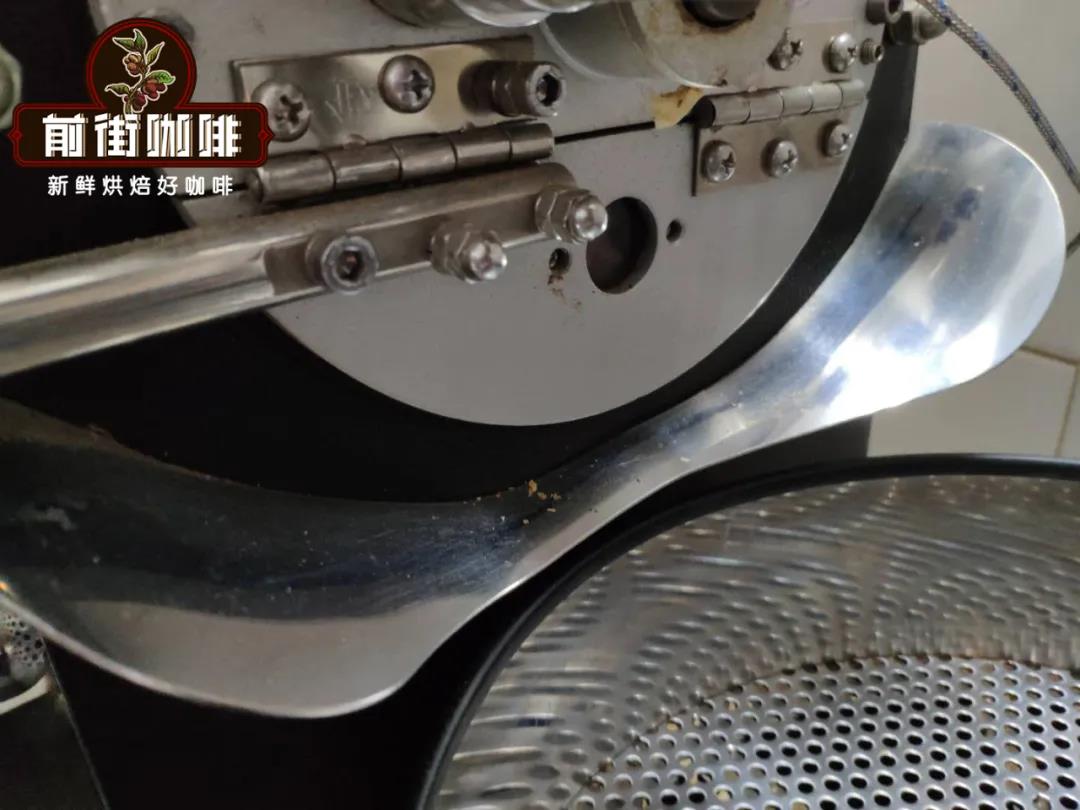
Arsi: Yang family 800N, bean dosage 480g: furnace temperature to 160C, throttle opening 3, firepower 120g. The firepower is adjusted at 115 degrees, and the throttle is opened at 4. Bake to 6: 00 ", the temperature is 154.9 degrees, the bean surface turns yellow, the smell of grass disappears completely, and the dehydration is completed. In the 8th minute, ugly wrinkles and black markings appeared on the bean table, and the smell of toast obviously changed to the smell of coffee, which can be defined as a prelude to an explosion. at this time, it is necessary to listen clearly to the sound of an explosion point, to 9: 08 "start to explode, the throttle is fully open, and the development time of an explosion is 1: 20", put into the pot at 193.5 degrees.
Coffee cup test report on Qianjie
Huakui 4.0
Dry aroma: citrus, berries
Shixiang: blackcurrant, rose
Entrance: almonds, strawberries, blackcurrant, fermented, long-lasting sweetness

Arsi
Dry fragrance: berries
Wet fragrance: jam
Entrance: plum, berry, cranberry jam, nectarine, mango, honey
Suggestion on brewing coffee in Qianjie
Filter cup: V60 # 01
Water temperature: 90-91 degrees
Powder content: 15g
Ratio of powder to water: 1:15
Degree of grinding: BG6m/ fine sugar size (20 sieve bowl sieve powder to 80%)
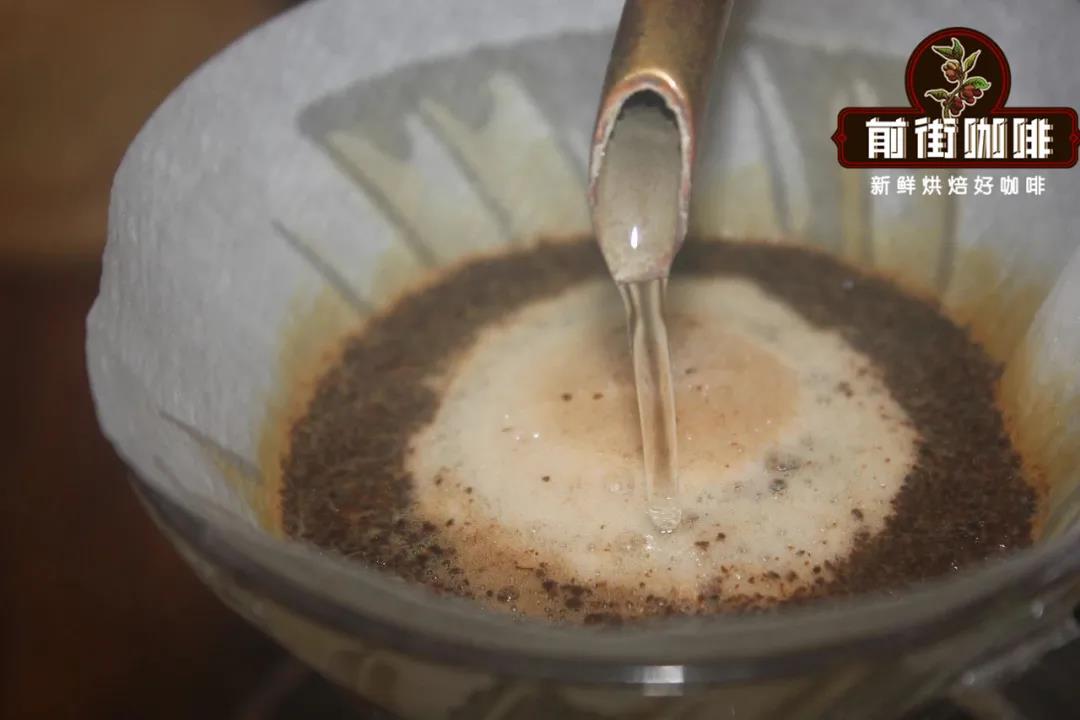
Qianjie cooking technique: the first section is filled with 30 grams of water for 30 seconds, followed by 95 grams (the electronic scale shows about 125 grams), and the injection is completed in about 1 minute. When the water level drops to 2 grams in the powder layer, the remaining 100 grams are injected at 3 places (the electronic scale shows about 225 grams). About 1 minute 40-1 kilogram 39th 45 "second injection is completed. 2: 00"-2 kilogram 3910 "trickling is completed, remove the filter cup and complete the extraction.
Huakui 4.0 flavored flavor: high temperature aroma of almonds, slow cooling of sweet and sour berries, blackcurrant juice, honey finish, long-lasting sweetness.
Arsi cooking flavor: high temperature berry juice-like taste, slowly cooling after plum, nectarine, mango, honey finish.
For more boutique coffee beans, please add private Qianjie coffee on Wechat. WeChat account: kaixinguoguo0925
Important Notice :
前街咖啡 FrontStreet Coffee has moved to new addredd:
FrontStreet Coffee Address: 315,Donghua East Road,GuangZhou
Tel:020 38364473
- Prev
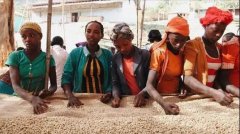
The difference between the flavor of Yega Xuefei producing area by washing Yega Xuefei with Water and Solar Yega Sheffei in Ethiopia
Professional coffee knowledge exchange more coffee bean information please follow the coffee workshop (Wechat official account cafe_style) Yega Xuefei believes that we are not unfamiliar with a coffee producing area, its bright sour, clean and refreshing coffee flavor has become the first bean for many people to introduce boutique hand-brewed coffee. In the memory of many people, Yega Xuefei has always been washed with water.
- Next
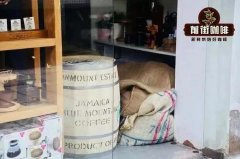
Blue Mountain Coffee's first sun treatment is a novelty? The difference between sun blue mountain and water blue mountain
Professional coffee knowledge exchange More coffee bean information Please pay attention to coffee workshop (Weixin Official Accounts cafe_style) Blue Mountain coffee sour and bitter balance coffee flavor, delicate fragrance of coffee aroma, so that coffee lovers have romantic feelings for Jamaica Blue Mountain coffee beans, Qianjie is one of them. Blue Mountain Coffee has been marketed over the years as some so-called Blue Mountain Flavor Blue Mountain Coffee drinks.
Related
- Beginners will see the "Coffee pull flower" guide!
- What is the difference between ice blog purified milk and ordinary milk coffee?
- Why is the Philippines the largest producer of crops in Liberia?
- For coffee extraction, should the fine powder be retained?
- How does extracted espresso fill pressed powder? How much strength does it take to press the powder?
- How to make jasmine cold extract coffee? Is the jasmine + latte good?
- Will this little toy really make the coffee taste better? How does Lily Drip affect coffee extraction?
- Will the action of slapping the filter cup also affect coffee extraction?
- What's the difference between powder-to-water ratio and powder-to-liquid ratio?
- What is the Ethiopian local species? What does it have to do with Heirloom native species?

